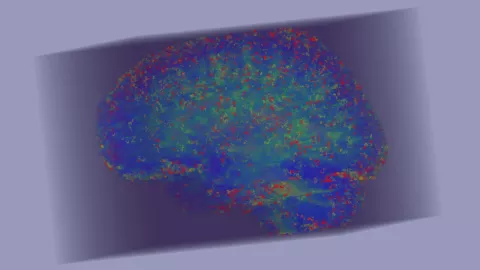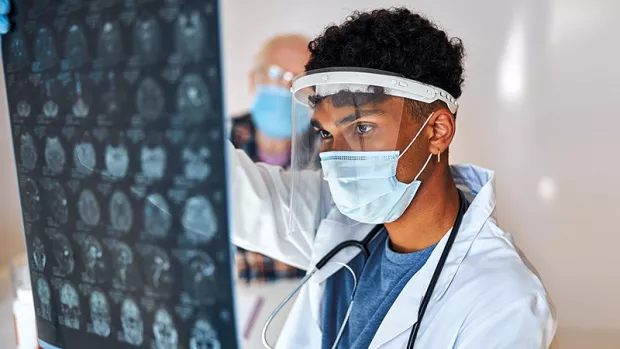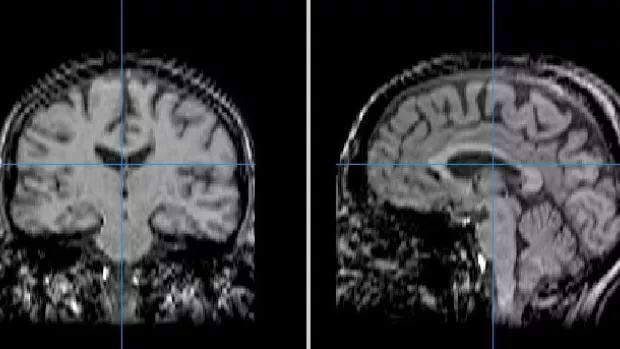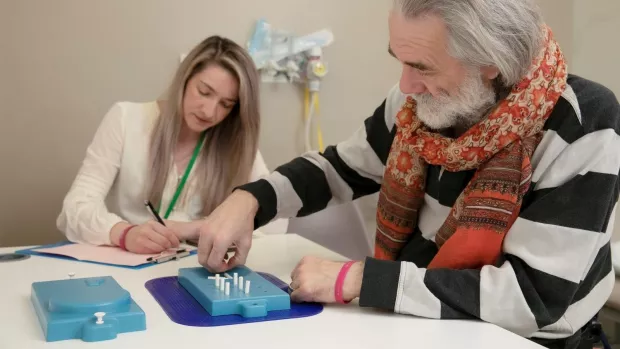
Four ways MRI advances are transforming MS research
Last month, Professor Olga Cicarelli gave the fifth annual Stop MS lecture. She told us how advances in MRI technology are transforming MS research.
Just in case you don’t have time to watch, here’s a quick round-up of what we learned.
1. MRI is making diagnosis faster and more accurate
Before MRI became the norm for MS diagnosis, you had to wait for two episodes of symptoms before MS could be confirmed. Now, we routinely use MRI after the first symptom to see whether there are lesions indicating MS.
But sometimes it goes wrong. People with other conditions are mistakenly told they have MS. Or normal signs of aging are mistaken for MS lesions.
New MRI techniques are changing that. For example, Olga explained you can often tell a lesion was caused by MS if it is located around a blood vessel. This new MRI marker can much more precisely distinguish MS from similar conditions.
2. MRI is getting us closer to new treatments for progressive MS
MRI is already being used in clinical trials to help us see whether a drug is effective. In the MS STAT2 trial of simvastatin, a subgroup of participants are having MRI scans to see whether the drug is reducing brain shrinkage (brain shrinkage is a sign of nerve cells dying).
The next challenge is to use MRI to run a new, more efficient type of clinical trial. In traditional trials, you compare one new drug to a placebo (an inactive drug). In a ‘platform’ trial you test many drugs at the same time.
MRI can tell us whether these drugs are showing enough potential to stay in the trial. If a potential drug is showing no signs of reducing brain shrinkage on an MRI, you can focus your resources on the most effective drugs.
Read about our planned clinical trials platform
3. MRI could tell you how you’ll respond to a treatment
With over a dozen treatments for relapsing MS, it can be hard for someone to know which is the right treatment for them. Neurologists help people with MS choose a treatment based on things like the risk of side effects, whether they are planning a pregnancy, or if they have another health condition.
Olga is working on how to use MRI in combination with Artificial Intelligence (AI) to predict how someone’s MS would respond to a particular treatment.
She’s doing this by gathering the characteristics that define someone’s MS – their brain MRI, genetic factors, clinical assessments and so on. And then seeing what each persons’s response is to their treatment. AI will use all that data to learn what the pattern is that predicts a specific response.
Eventually when someone is diagnosed with MS, the AI algorithm will automatically tell their doctor which medication someone with that particular set of characteristics is most likely to benefit from.
4. MRI is helping us predict how your MS will develop
Olga talked about two studies published last year that showed MRI scans taken early after diagnosis could predict what your MS might be like 15 and 30 years later.
Depending on the location and number of lesions on those early MRI scans, it was possible to predict with a high level of accuracy, how each person’s MS would progress.
For example, people who had no lesions in two specific areas of the brain one year after their first symptoms of MS, had an 87% chance of having only minimal disability after 30 years.




